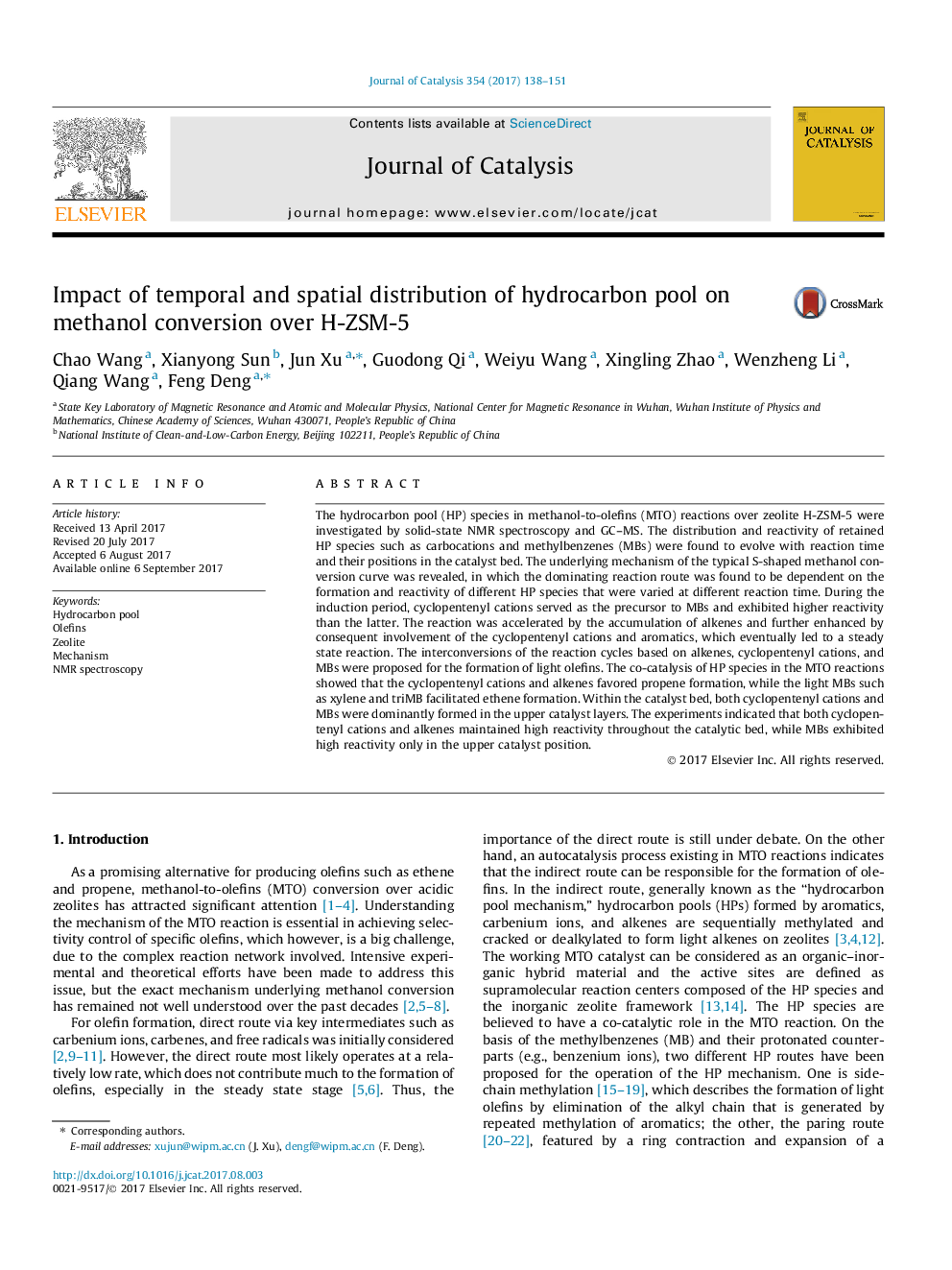| کد مقاله | کد نشریه | سال انتشار | مقاله انگلیسی | نسخه تمام متن |
|---|---|---|---|---|
| 6455506 | 1419755 | 2017 | 14 صفحه PDF | دانلود رایگان |

- The distribution and reactivity of retained hydrocarbon pool species varies with reaction time and contact time.
- The reaction is accelerated by the accumulation of hydrocarbon pool species.
- The product selectivity is related to different hydrocarbon pool species.
- A cyclopentenyl cations-based cycle is proposed.
- The distribution of hydrocarbon pool species in the catalyst bed dictates the reaction pathways.
The hydrocarbon pool (HP) species in methanol-to-olefins (MTO) reactions over zeolite H-ZSM-5 were investigated by solid-state NMR spectroscopy and GC-MS. The distribution and reactivity of retained HP species such as carbocations and methylbenzenes (MBs) were found to evolve with reaction time and their positions in the catalyst bed. The underlying mechanism of the typical S-shaped methanol conversion curve was revealed, in which the dominating reaction route was found to be dependent on the formation and reactivity of different HP species that were varied at different reaction time. During the induction period, cyclopentenyl cations served as the precursor to MBs and exhibited higher reactivity than the latter. The reaction was accelerated by the accumulation of alkenes and further enhanced by consequent involvement of the cyclopentenyl cations and aromatics, which eventually led to a steady state reaction. The interconversions of the reaction cycles based on alkenes, cyclopentenyl cations, and MBs were proposed for the formation of light olefins. The co-catalysis of HP species in the MTO reactions showed that the cyclopentenyl cations and alkenes favored propene formation, while the light MBs such as xylene and triMB facilitated ethene formation. Within the catalyst bed, both cyclopentenyl cations and MBs were dominantly formed in the upper catalyst layers. The experiments indicated that both cyclopentenyl cations and alkenes maintained high reactivity throughout the catalytic bed, while MBs exhibited high reactivity only in the upper catalyst position.
94
Journal: Journal of Catalysis - Volume 354, October 2017, Pages 138-151